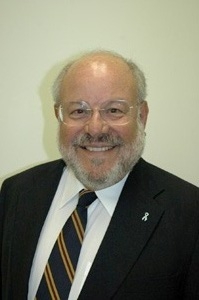A world expert on horseshoe crabs is worried about their extinction after 455 million years of life on Earth--largely because of the crab having become a delicacy in nations in Asia.
Dr. John T. Tanacredi first became familiar with horseshoe crabs as a boy from Brooklyn coming to Babylon, Long Island in summers and learning to swim off a beach along the Great South Bay. In that period, the early 1960s, the beach was "filled" with horseshoe crabs. The shores of the New York Metropolitan Area especially Long Island and the wetlands they embrace have been an active habitat for horseshoe crabs.
Back in Brooklyn, as a young man volunteering as a docent at the New York Aquarium in Coney Island, he began studying what he speaks of as this "alien-looking, strange-looking creature."
The aquarium had an exhibit featuring horseshoe crabs and Dr. Tanacredi speaks of the impact on him of the writings of the aquarium's director, the Dr. George Ruggieri, a marine biologist and a Catholic priest, he noted. Dr. Ruggieri's writings told of how horseshoe crabs, beyond being an extraordinary life form in themselves--"living fossils," said Dr. Tanacredi--have provided "pharmaceuticals from the sea."
The blue blood of the horseshoe crab has been and remains indispensable in the detection of bacterial endotoxins in medical applications. Horseshoe crabs are widely harvested for this medical purpose. It's a $300 million industry globally, he said. The animals are bled, the blue blood collected and used for this medical purpose. Most of the crabs survive upon being returned to the sea.
But horseshoe crabs were killed on a massive scale for years to become fertilizer. And they are still taken to be used as bait, especially to catch eels and whelk or conch. Some states forbid or restrict the taking of horseshoe crabs. In New York, the Department of Environmental Conservation has been setting yearly quotas--allowing 150,000 to be taken this year. Can that number be appreciably lowered?
"Habitat loss and habitat degradation," says Dr. Tanacredi, have been impacting on horseshoe crabs. Shoreline development has had a major effect. "They go to the same beach every year to mate," he notes.
And now horseshoe crabs have become "an exotic food" in parts of Asia--eating them has become especially popular in Singapore, Vietnam and Cambodia--and this is exacerbating the survival of the horseshoe crab as never before.
"In a decade, they could be extinct," says Dr. Tanacredi.
The number of horseshoe crabs in the world--there are four species of them--has been "dramatically decreasing," he relates. "The next decade will be critically important."
"Extinction," he said, can "happen all of a sudden." He speaks of the passenger pigeon of which there were an estimated three billion in the world in the 19th Century. They were heavily hunted, and in 1914, the last one, named Martha, died in her cage at the Cincinnati Zoo.
Horseshoe crabs "survived the five mass extinction events" that have occurred on the Earth through their 455 million years of existence, said Dr. Tanacredi. "They are a wonderful organism. They are so important to human health--and this would be lost forever, too. It is sad testimony to how we treat other species on this planet."
Dr. Tanacredi, a Melville, Long Island resident, has since 2013 been director of the Center for Environmental Research and Coastal Oceans Monitoring (CERCOM) of Rockville Centre-based Molloy College. The center is located at what had been the Blue Point Oyster Hatchery in West Sayville on Long Island. At CERCOM, "about 10,000 juvenile horseshoe crabs" are produced each year.
Dr. Tanacredi is a full professor at Molloy, teaching courses that include Ecology and Marine Biology. Before that, for 13 years, he was a professor and chairman of the Earth Marine Sciences Department at Dowling College in Oakdale, Long Island--which this year closed. Dowling underwent extinction itself.
Earlier, for 24 years Dr. Tanacredi was a coastal research supervisory ecologist for the National Park Service. He also worked for the U.S. Coast Guard. And he served as a "hurricane hunter" for the U.S. Navy and in that job "cut my teeth on the impacts of hurricanes on coastal environments." For 12 years he was deputy director of the Aquatic Research and Environmental Assessment Center at Brooklyn College. And he has been chairman of the New York Marine Sciences Consortium and also the Suffolk County Wetlands Management Work Group.
He holds a doctorate in environmental health engineering from NYU-Polytechnic Institute. He has had 50 peer-reviewed scientific papers published and has authored five books.
(Note: You can view every article as one long page if you sign up as an Advocate Member, or higher).





